Painting horses
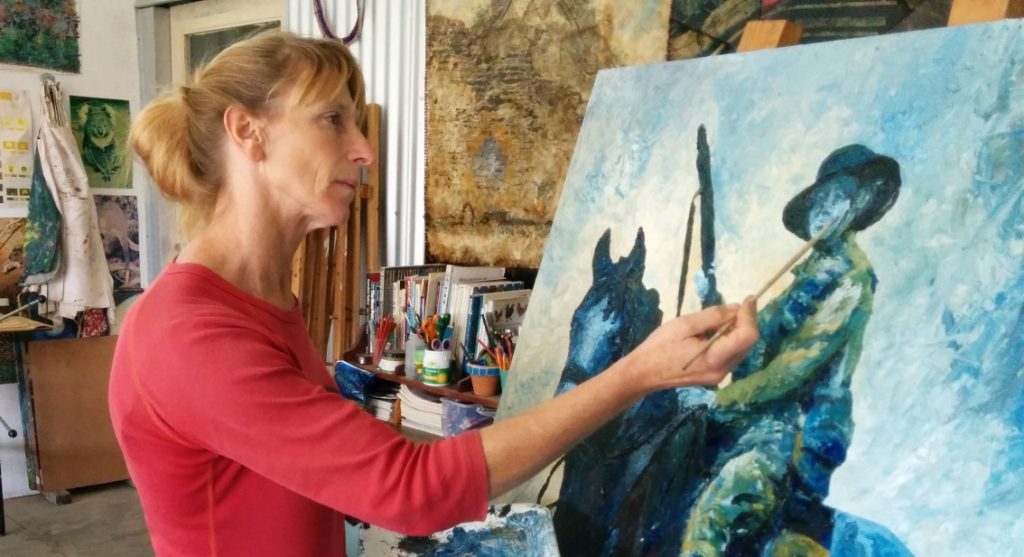
Horses have fascinated Australian artists for just on two centuries. The first locally produced work to feature a horse is thought to be a watercolour by an unknown artist who, in 1804, depicted mounted troopers confronting rebels at the Castle Hill uprising near Sydney. Since then, hundreds of painters, sketchers, illustrators, photographers and sculptors have set out to capture the character and charisma of horses and the meaning and nature of their relationships with people.
After hearing about the Museum’s Horses in Australia project, Hunter Valley artist and equestrian Margrete Erling wrote to me recently to tell me about a series of paintings she is currently developing exploring horses’ roles in our national history. In this guest post, Margrete shares why she was inspired to take on this subject, and how it’s an integral part of her and her family’s life with horses.
My name is Margrete Erling and I live on a farm about one and a half hours north of Sydney. In my ‘day job’, I work as a public artist creating artworks across the local region (Gosford, Wyong, Newcastle) and we also run an art school and offer riding lessons from home. My two passions – art and horses – are completely intertwined. My art classes often feature horses, scenes from the farm and sometimes riding equipment (such as old leather saddles) as subject matter. Some of my students, like me, do both art and riding. Last year we even made our end of year event a combined Ribbon Day and Art Exhibition!
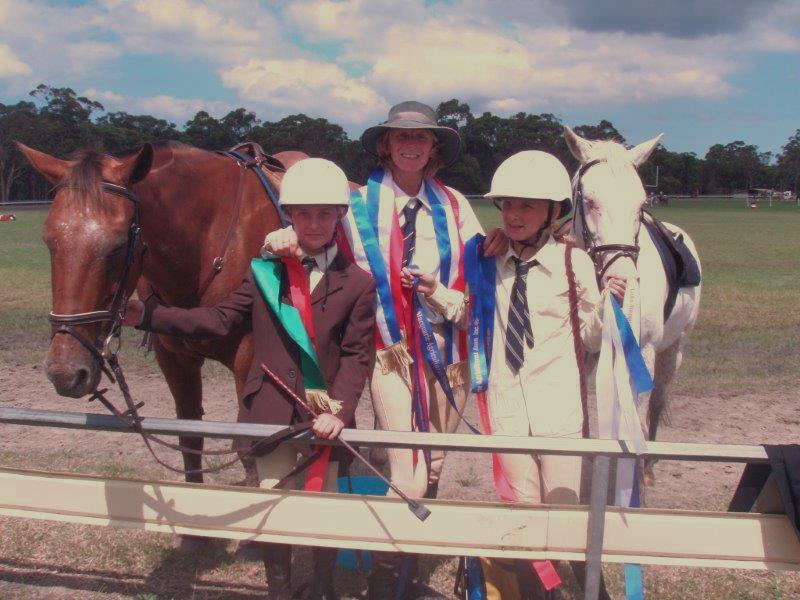
We currently keep eight horses, ranging in size, age, breeding and colour – including a Shetland Pony, Welsh Pony, Arab, Appaloosa, Quarter Horse, Thoroughbred cross, Friesian and a Warmblood. My two daughters, my niece and I, ride all of them, competing in various events and disciplines, including harness work. I’m the president of our local pony club (Watagan Pony Club) and run riding lessons here every week for local children and adults.
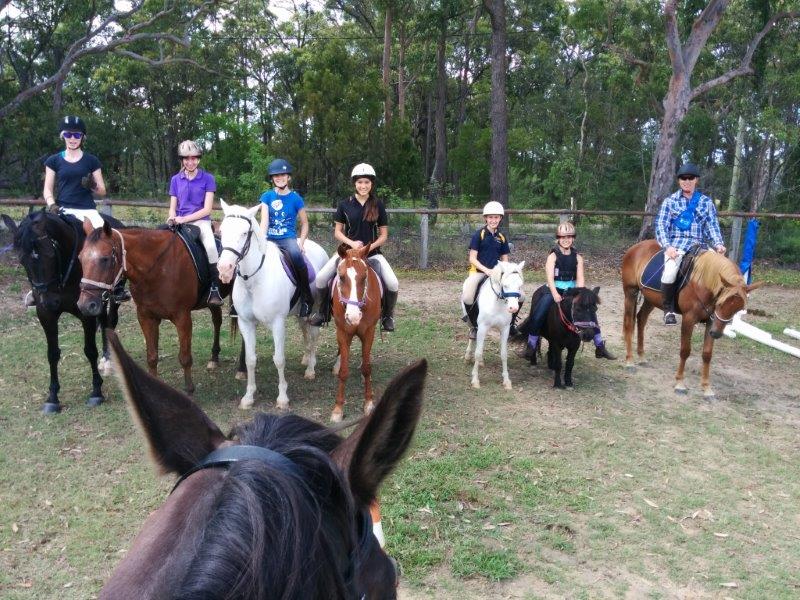
I’ve been painting horses for many years and this year seems like a big HORSE/ART year for me. This year is the Chinese Year of the Horse and I was born in 1966, which was also a year of the horse, so my Chinese zodiac sign is the horse. To celebrate, I decided to develop a project depicting Australian horses through our short history.
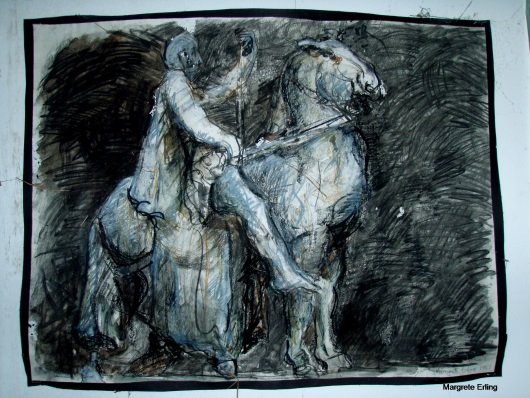
Initially, I planned to call the project War Horses, or something similar, and focus on our wonderful Australian Waler horses that bravely carried our soldiers during World War One. Upon further thinking however, I decided the expand the project, making it conceptually broader and including horses working in the tough coal mines, as colonial stock horses and in other heroic roles.
To begin with, I searched through the archives of various museums and photo libraries to find iconic images of such horses in Australia. This helped me refine the project to encompass at least six paintings. The first three will be ‘WW1 Light Horse Waler with soldier mounted’, ‘Colonial Stockhorse in the outback’ and ‘Heavy horse working in the coal mines’.
Other subjects I hope to develop are the ‘Horse with De Groot cutting the ribbon (illegally) at the opening of the Sydney Harbour Bridge’, ‘Stunt horse in the film industry with legend trainer Heath Harris’, ‘Police horse at work’ and ‘Circus or trick horse’. Initially, I hope to paint smaller versions of each (1200mm x 900mm), and then upscale them to full size once the set is completed.
I started with my painting of the Australian Waler, since this year marks the centenary of World War One. I finished it a few weeks ago, and here’s a sneak preview …
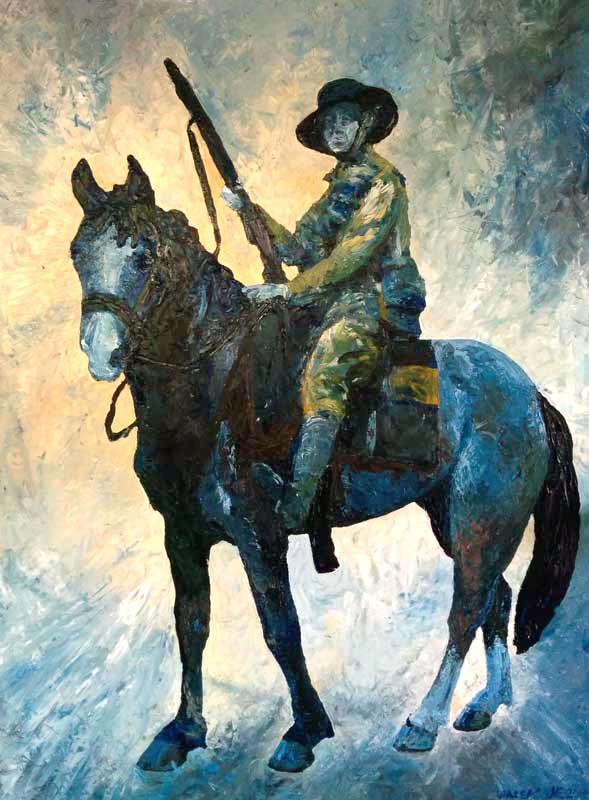
I selected this image, as to me, the soldier appears kind and considerate, even somewhat afraid of what he is about to confront or has experienced already. His eyes are quiet and solemn and his hand on the rein is soft and giving. He sits pensively upon his obedient and brave mount, who is completely unaware of what fate will await him. The horse is backlit, shining in the light as the hero of the pair, with the soldier set back more encapsulated in the shadows of his uncertain future.
When my students saw the work for the first time, they were taken by the subtleties in the shift of power in the work- not given to the soldier in this instance, but to the horse- the soldier’s bravest and most loyal companion. I feel humbled by my students comments- and also by these amazing men and horses who so bravely faced the horrors of war together, now 100 years ago.
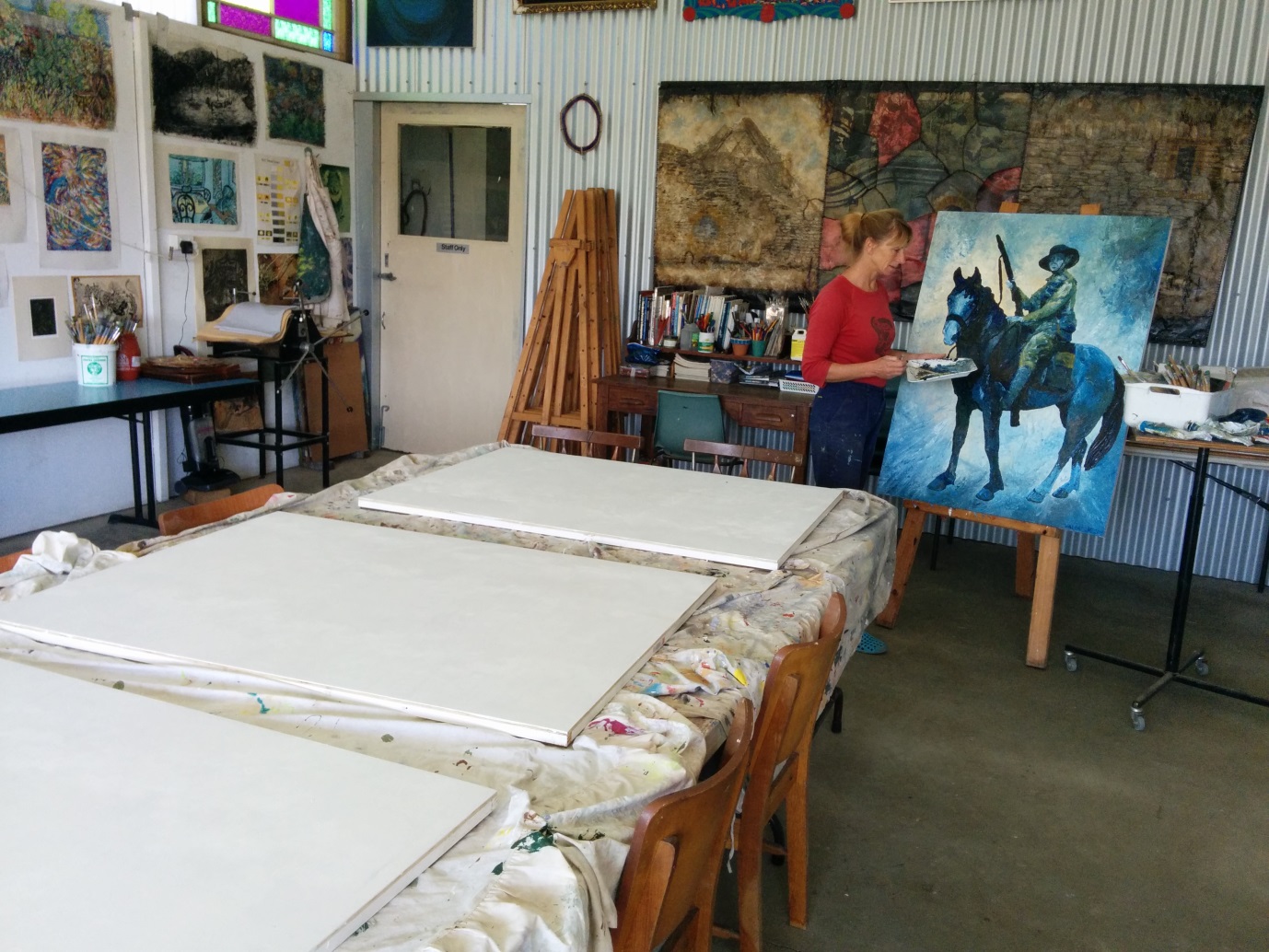
I am about to start “Colonial Stock Horse”, who did it toughest of all. Arriving in a country ill set for grazing horses, ridden across barren country exploring new territory or driving starving stock through the brutal inland, these horses did well to survive the conditions of early Australia. Many of the most talented stock riders were local Aboriginals (living and working on the large outback stations) who knew the country well and developed close connections with their mounts. Explorers of the early pioneering days soon replaced horses with camels, who more evolved to survive for days without water.
When the set of 6 paintings are complete, I hope to exhibit them in one of our local regional galleries. These works (dependent upon funding) may also be expanded to encapsulate more iconic images of horses in Australia and be repainted again to a scale twice their present size- truly monolithic in scale. Either way, I am enjoying paying my own personal homage to ‘Horses in Australia’ and look forward to visiting the National Museum’s Spirited: Australia’s horse story exhibition in Canberra, later this year.
You can find out more about Margrete’s work on her website. And perhaps you too are an artist captivated by horses? Leave a comment below and let us know about your work.
[Top image: Working on my Waler painting in my studio, where I run art classes each week. This and all images courtesy Margrete Erling, 2014]
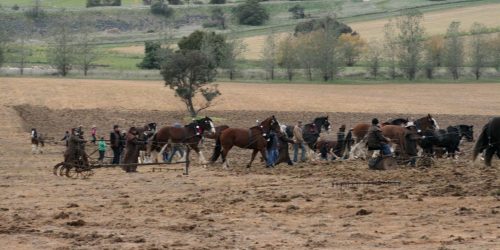
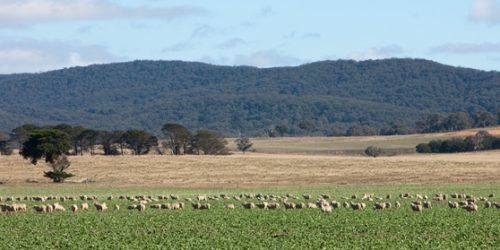
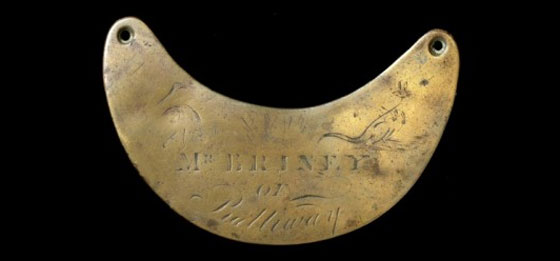
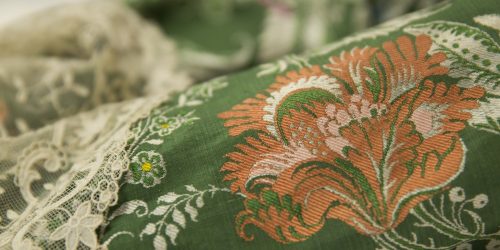
A curator’s research is never done! Just as I posted Margrete’s story, my colleague Nicole McLennan tells me that she’s found another work that may be the earliest Australian painting featuring horses. E. Dayes’ ‘A view of Sydney Cove, New South Wales’, shows a wagon drawn by a team of four and followed by five or six riders. It was painted in 1804, the same year as the watercolour of the uprising at Castle Hill.
The work is held in the National Library of Australia.
It would be great to see these images painted in 1804 as well!
You can view the second 1804 image by visitng http://nla.gov.au/nla.pic-an6016289 … but you need Nicole’s eagle eyes to find the horses. Zoom in to those tiny little figures on the other side of the cove, almost right in the middle of the picture. The artist obviously didn’t consider them very important!